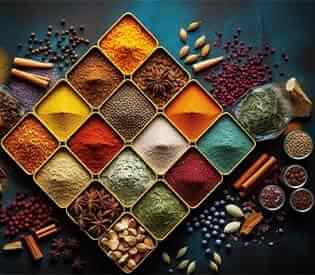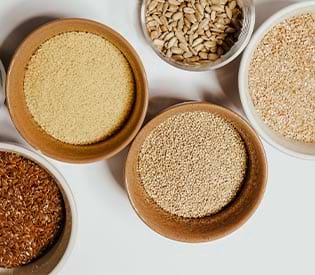Birch Bark
📦🚚 Fast & Free shipping on all orders
What is birch bark?
Birch bark comes from the top bark of the birch tree. It is one of the high-quality bulk "herbs" that Starwest Botanicals sells. These "herbs" are actually parts of plants like trees, bushes, flowers, roots, twigs, leaves, and even the bark of plants. Betula pubescens is the Latin name for birch bark. The bark of the birch tree, which is native to the temperate and subarctic zones of the northern hemisphere, has been used for many different things over the years, from making writing paper to making boats. In fact, the heathen Slavs of early Russia worshipped and revered the birch tree, which is still the national tree of Russia today.
The bark of the Betula pubescens, or birch tree, can be used in many ways, just like the bark of other plants. It's important to know that just because something is an organic herb, that doesn't mean you can use it in any way you want. Birch wood is not known to be dangerous, but it is thought that up to 20% of people with hay fever may be allergic to the pollen grains from Betula pubescens. People like this should stay away from birch bark. Dried herbs, root extracts, essential oils, and even the bark of the Betula pubescens tree can all be helpful in many situations. However, it is important to learn as much as possible about herbs before starting any herbal routine.
How do I use birch bark?
Large items like wastebaskets, storage boxes, boats, and rustic furniture may be covered with birch bark. Consider making a basket, pencil holder, picture or mirror frame, wreath, place mat, lampshade, or cover for a light switch panel if you wish to make ornamental things out of birch bark.
Birch bark benefits:
Birch plants come from Europe and some parts of Asia. Medicine is made from the tree's leaves, bark, and buds. Birch is used to treat joint pain, kidney stones, bladder stones, urinary tract infections (UTIs), and other diseases, but there is no good scientific evidence to back any of these uses.
◉ Eases inflammation and pain: Birch bark's ability to ease aches and pains, especially those caused by arthritis or rheumatism, is one of its most valuable qualities. In fact, if you cut a birch leaf, it will smell a lot like wintergreen, a plant and essential oil that is often used to relieve pain. This distinction is because the plants have similar chemicals (called terpenes) in them.
People also think that birch trees have methyl salicylates, which are like the plant versions of acetylsalicylic acid, the main ingredient in aspirin. In this way, birch is like willow bark, which has similar chemicals and natural anti-inflammatory and pain-relieving qualities. Again, birch bark, sticks, or leaves can be used to make tea or an oil that can be used to rub on sore joints, muscles, etc.
◉ Tones and clears skin: Birch bark tea or extract has natural drying effects that make it beneficial for oily skin and some types of skin breakouts. It has been used to treat eczema and rashes for a long time, but only "wet" ones. This means that it isn't the best choice for dry skin. (Most astringents dry out the face.) Over the years, some herbalists have even said that the leaves can help with hair loss. If you have access to a healthy tree, you can put some fresh birch leaves in hot water for about 4 hours and then use the resulting mixture as a skin wash to tone and calm your skin.
◉ Spring tonic and detoxifier: Birch trees have the best new leaves and twigs for springtime foraging. They have bitter, strong plant chemicals that help your body digest food and get rid of waste. This advantage makes them a great addition to a spring drink. If you have access to a birch tree and know that it hasn't been sprayed with pesticides or other dangerous chemicals, look for new leaves that are fully open and twigs that are still bendable to pick. Just be careful not to cut off too many twigs, because the tree will get new leaves from them. Cut the sticks into small pieces or peel off the bark and mix them with the leaves to make a delicious cup of tea.
◉ Diuretic Action: Birch bark and other parts of the tree, as natural relievers, are especially good at cleaning out the kidneys and bladder. Basically, diuretics make you pee more, which flushes out toxins and reduces swelling or fluid buildup by getting rid of extra fluid. Birch has been used to treat kidney and bladder stones for a long time. It can be made into tea or added to oil. In the past, making oil involved soaking the leaves in olive oil for 4 to 6 weeks. Here, you can learn how to make oil with herbs in it. The cream can then be rubbed into the area that needs it. Like dandelion root, birch has nutrients that help your body get rid of extra fluid while also giving it what it needs.
Where do I buy birch bark?
Buy Birch Bark from the health food store in the USA, Alive Herbals.
Birch bark information (at a glance):
| Product Name | Birch Bark. |
| Scientific Name | Betula. |
| Country of Origin | Originally from and native to Northern Europe. |
| Ingredient | Birch Bark. |
| Taste & Aroma | The bark smells strongly of wintergreen. |
| Shelf Life & Storage | Shelf life is about 06 – 24 months. The best way to store them is in a cool, dark place with a lid that keeps out air. |
| Precautions | We requested you, before consuming spices, herbs, teas or any kind of natural products, to consult an expert qualified healthcare practitioner or herbalist. |
| Note | This product information has not been appraised by the Food and Drug Administration (FDA). This information is solely intended for educational purposes. |







